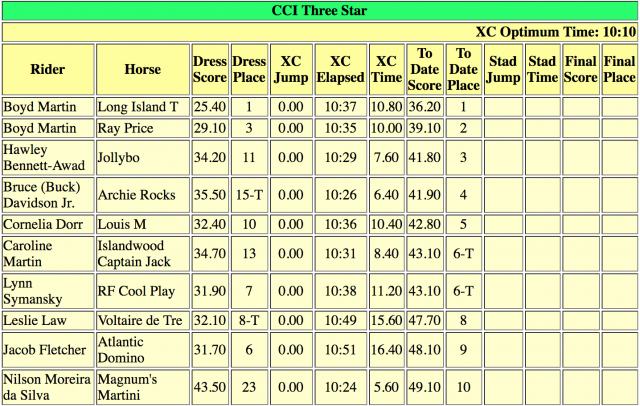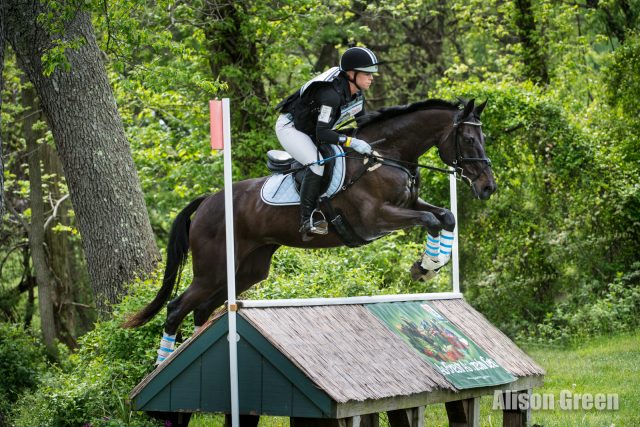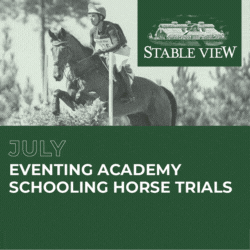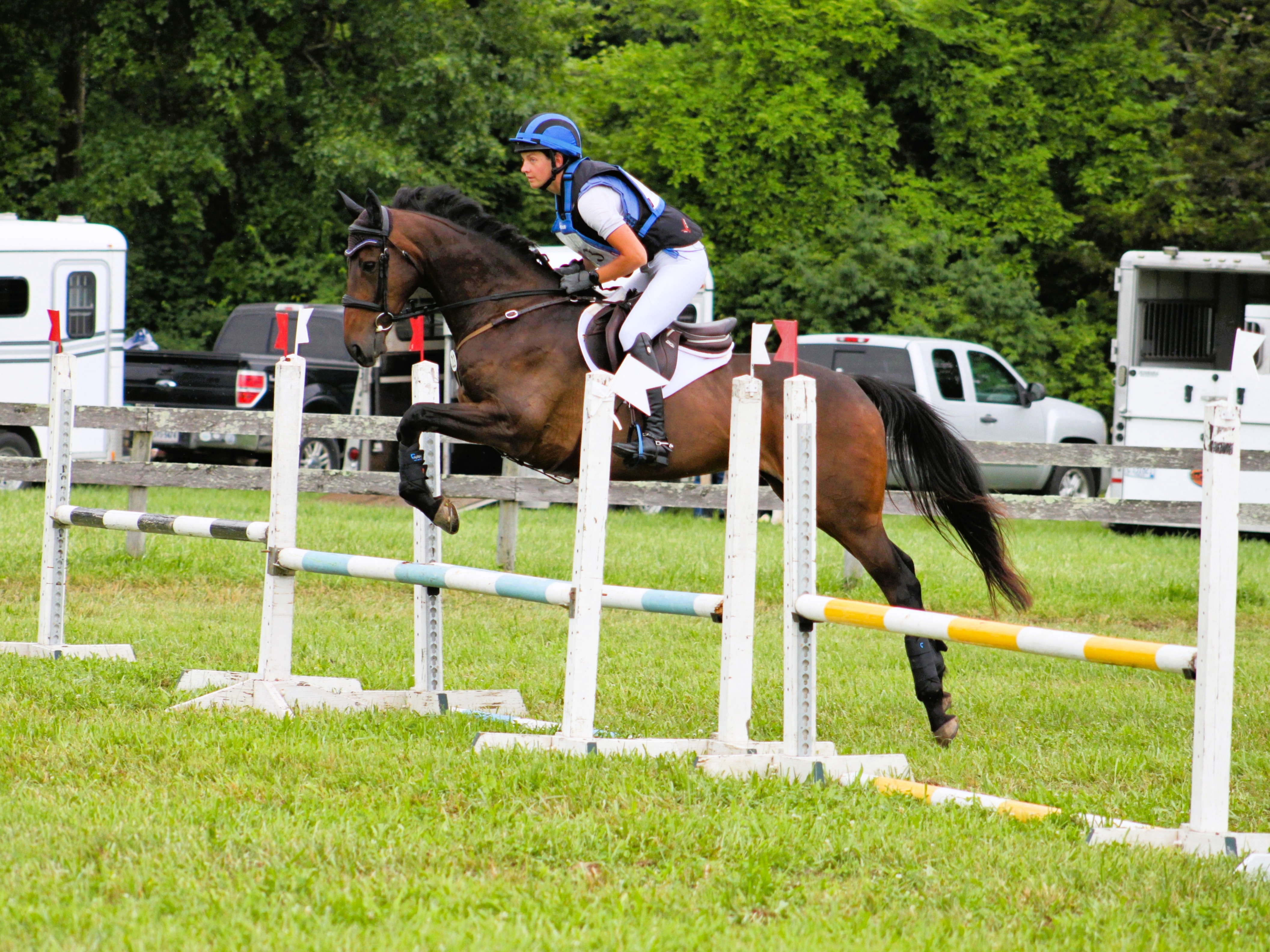
Boyd Martin and Long Island T. Photo by Jenni Autry.
Boyd Martin said yesterday that he planned to ride CCI3* debutant Long Island T at a pace that allowed the horse to cope with the fences in the biggest test of his career to date.
A clear round with 10.8 time penalties kept Long Island T, a 12-year-old Oldenburg/Thoroughbred (Ludwig von Bayern x Haupstsbuch Highlight, by Heraldik xx) owned by the Long Island T Syndicate, atop the CCI3* leaderboard on 39.1 following cross country.
Boyd Martin also holds second place with another CCI3* first-timer in his homebred Ray Price, a 10-year-old Thoroughbred/Dutch gelding (Raise A Stanza X Fair Fiona, by Salute) owned by the Ray Price W Syndicate. Ray Price added 10 time penalties to move up one spot on the CCI3* leaderboard to sit second on 39.1.

Boyd Martin and Ray Price. Photo by Jenni Autry.
No one caught the optimum of 10 minutes, 10 seconds on Capt. Mark Phillips’ CCI3* course, and speedy combinations were rewarded with big jumps of the leaderboard.
After early trouble on course at the Land Rover Kentucky Three-Day Event, Hawley Bennett-Awad found redemption in a big way today with her own Jollybo. The 14-year-old British-bred mare (Jumbo X Polly Coldunnell, by Danzig Connection) jumped clear with 7.6 time penalties to move from 11th after dressage up to third on 41.8.

Hawley Bennett-Awad and Jollybo. Photo by Jenni Autry.
Buck Davidson and Maya Studenmund’s Archie Rocks, a 10-year-old Thoroughbred (Le Monde X Unbridled Diva, by Unbridled Jet), clocked one of the fastest rounds in the division, moving from 15th to fourth place on 41.9 with 6.4 time penalties.
Cornelia Dorr and her own Louis M, a 13-year-old Rheinlander (Lissabon 29 X Angelique M, by Abanos), jumped clear with 10.4 time penalties in the CCI3* debut for both horse and rider to move up from 10th to fifth on 42.8.
Nilson Moreira da Silva and L & N Equestrian’s Magnum’s Martini, a 14-year-old Oldenburg (Magnum X Momo’s Girl) delivered the fastest round of the division with 5.6 time penalties to jump from 23rd after dressage up to 10th place on 49.1.
Seventeen of the 26 starters in the CCI3* completed without jumping penalties to give us a 65% clear rate. Fences 9B and 9C, a pair of skinnies at the Jersey Shore, caused the most trouble by far.
Nilson Moreira da Silva retired Lady Colina after two runouts at 9B. Cornelia Dorr retired Sir Patico MH following two runouts at 9C. Jessica Phoenix retired Dr. Sheldon Cooper after a runout at 9C.
Waylon Roberts and Lancaster had a runout at 9C and went on to complete with 20.8 time penalties. Autumn Schweiss and Oakport Strauss also had a runout at fence 9C and went on to complete with 6 time penalties. Liz Stewart and Elusive had two runouts at 9C before parting ways at fence 20, the hanging log jumping into the second water, when the mare left a leg.
Looking to other trouble on course, Nilson Moreira da Silva retired Cash after two runouts at the double of corners at fence 7. Whitney Mahloch and Military Mind were eliminated following a runout at fence 13, the corner after the down bank, and two runouts at fence 29B, the corner coming out of the Jersey Shore. Elinor MacPhail O’Neal and RF Eloquence had a runout at 16B, the second of the angled brushes, and retired after fence 26.
Click here to catch up on all the CCI3* action in EN’s live updates. Click here to view final scores after cross country.
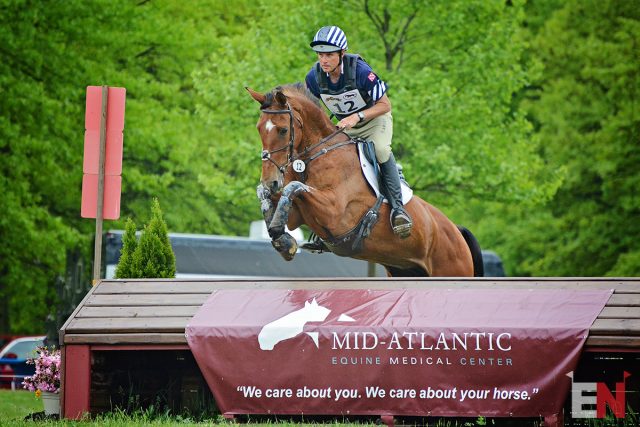
Boyd Martin and On Cue. Photo by Jenni Autry.
Boyd Martin and On Cue Keep CCI2* Lead
The top three in the CCI2* after dressage remained unchanged following cross country, will all three pairs catching the optimum time of 8 minutes, 32 seconds.
Boyd Martin and Christine Turner’s On Cue, a 12-year-old Anglo European mare (Cabri d’Elle X On High, by Primitive Rising), still leads on 25.7 in her CCI2* debut.
Boyd will not have a rail in hand tomorrow over Caroline Martin and Sherrie Martin’s Jump Jet, a 9-year-old Irish Sport Horse (Captain Clover X Kilmullen Cruisalier, by Cavalier Royale), who sits second on 29.2.

Caroline Martin and Jump Jet. Photo by Jenni Autry.
Allison Springer and Business Ben, an 8-year-old Thoroughbred (Artie Schiller X Min Elreeh, by Danzig) owned by the Business Ben Partnership, sit third on 30.8.
Tim Bourke and Carla Abramcheck’s Quality Time, a 7-year-old Irish Sport Horse mare (Guidam X Ruby Roller, by High Roller) clocked around 32 seconds inside the time to deliver the fastest round in the division, moving up from seventh after dressage to fourth place on 34.6.
Allie Knowles and Katherine O’Brien’s Casarino, an 11-year-old Holsteiner (Cassaro X Rosy M, by Cardino), jumped clear with 4 time penalties to round out the top five on 35.9.
Seventeen of the 18 starters in the CCI2* jumped clear over the course, which Morgan Rowsell co-designed with Capt. Mark Phillips. Alex Tett and Hawk’s Cay were the only pair that did not complete, retiring after picking up 20 penalties at both fence 7C and fence 8.
Ten of the 17 pairs that completed caught the optimum time of 8 minutes, 32 seconds. Click here to view final scores in the CCI2*. Stay tuned for quotes from the overnight leaders. Go Eventing.
#JFI3DE: Website, Schedule, Live Scores, EN’s Coverage, EN’s Instagram, EN’s Twitter
